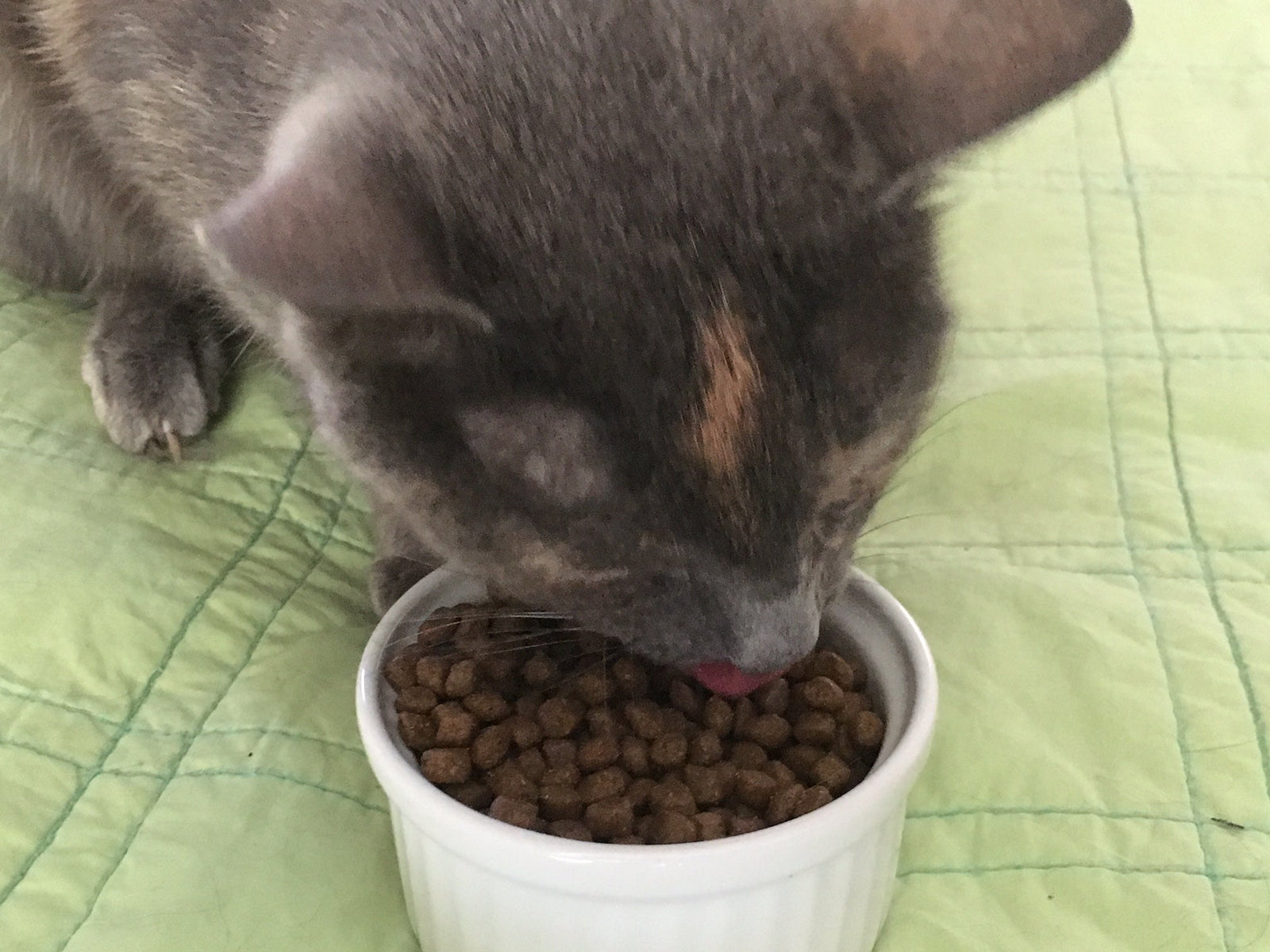A new cat feeding system is about to hit the market. The system uses the natural hunting instincts of cats to help eliminate frustrations and inactivity of indoor cats. Ingenious idea that replaces the food bowl with the thrill of the hunt.
According to the inventor, the system "...eschews the traditional bowl. Instead, cat owners stuff small portions of dry food into five containers and hide them from the cat. The containers are made of hard plastic and wrapped in stretchy gray fabric, resembling a mouse. The idea is that when the cat is hungry, it will seek out the food and bat the pouch around, dispensing its contents through small holes in the fabric and the plastic."
I think this is a great boost for kitties, except for one problem. The system incorporates dry kibble as the "reward" for hunting, pouncing, and trapping the prey. But dry kibble is a terrible diet for cats for many reasons.
- Cats are not big drinkers. Their ancestors were desert dwellers and their urinary system was developed to be very efficient. But dry kibble is not what cat ancestors ate in the wild. When cats are fed dry kibble, they make a very concentrated urine, which predisposes them to make crystals in the urine. Urinary crystals are found in cats with feline lower urinary tract disease (FLUTD) and urethral obstruction, a life threatening condition. Cats need high moisture diets to encourage the flow of urine, a more dilute urine, and production of fewer crystals. Natural prey for cats contains about 75% moisture, where dry food contains 3 to 6% moisture.
- Dry kibble diets are high in carbohydrates. Corn is commonly used (as I always say, cats are carnivores, not "corn-ivores") in lower quality kibbles. But even the grain-free kibbles are high in carbohydrates. The grains have just been replaced with peas, lentils, tapioca, potatoes, or some other starch. Cats are not meant to eat high carbohydrate diets. Natural diets for cats only contain about 5% carbohydrates.
- Carbohydrates can lead to more dental disease. Carbs break down to sugars, which can lead to plaque, tartar, and tooth destruction. Contrary to popular belief, kibble does not clean the teeth. Most cats swallow whole pieces (ever notice them when the cat barfs them back on your carpet?).
- Cats that eat dry kibble tend to have more problems with obesity. Obesity leads to arthritis, diabetes, heart disease, and many other inflammatory conditions. Perhaps chasing down the kibble will help a bit, but it's still kibble.
- The high heat and pressure used to make dry kibble destroys many of the healthy nutrients in the food. Proteins become denatured and enzymes are destroyed.
- Grains in dry kibble are most likely GMO, treated with pesticides, and may contain mycotoxins from mold. Pesticide residues and mycotoxins are not destroyed in processing. Bacterial endotoxins from cooked contaminated meat in dry kibble remain after processing, even though the bacteria were killed.
- Synthetic preservatives are used in dry food to maintain a stable shelf life. Carcinogenic preservatives like BHA, BHT, and ethoxyquin are commonly used in lower quality foods.
Perhaps this system could be useful if a high quality freeze dried raw food was used inside the "mouse". However, I'm not sure the system is capable of dispensing different sized pieces and pieces that are lighter weight than kibble. If freeze dried raw could be used and if this system were used as a supplement to feeding a high quality, high moisture diet, then I would vote in its favor. However, I cannot condone feeding kibble to kitties, even if the fun of the hunt is included. Perhaps the designer of the system can figure out a way to design a "mouse" that dispenses a high moisture diet, but I foresee owner complaints when the carpets are covered with gooey cat food. The designer also needs to tell me how to train my dogs to ignore the cat food that is being strewn about the house. I suspect they would just try to eat the kibble, including the "mouse" dispenser.
Disclaimer: This content is for informational purposes only and is not meant to diagnose, treat, or replace consulting a primary veterinarian for individualized care.

